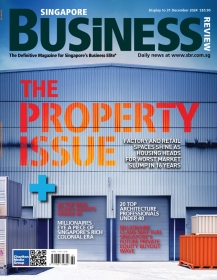
Singapore has fading influence in Southeast Asia's smartphone surge
Less developed and less penetrated Indonesia and Philippines are driving the record growth.
The world’s fourth most populous nation of Indonesia is not surprisingly the region’s largest smartphone market, research company GfK Asia in a release.
"Its combined feature phone and smartphone volume sales grew by 26 percent in total, with individual segments reflecting concurrent growth of 19 and 56 percent respectively. Although nearly four in every five mobile phones (78%) sold in the country are still feature phones due to their greater affordability, increasing number of consumers here are embracing smartphones which registered soaring sales of 4.5 million units over the previous year," it said.
Meanwhile, Philippines continue to report exponential three-fold growth of 326 percent in smartphone volume sales, rendering it the fastest growing market for smartphones in Southeast region, GfK Asia noted. It is also the country with the highest jump in smartphone market share within a year, from 9 to 24 percent.
“Unlike the more developed countries like Singapore and Malaysia, smartphone sales penetration levels in some of the less developed markets such as Thailand and Vietnam are still relatively low at 19 and 11 percent respectively, leaving a significant portion of the population still available for potential growth,” said Mr. Gerard Tan, Account Director for Digital Technology.
Smartphone adoption is rising fast in the region. GfK Asia data showed that each of the seven countries in the region reported smartphone growth rates in the range of 42 to 326 percent and Southeast Asian consumers spent some USD 8.75 billion on almost 29 million smartphones within the last 12 months, translating to 61 and 78 percent growth in volume and value.
Smartphone consumer purchase rate has "greatly increased" by 78 percent across the seven countries to now account for over 61 percent of the sector’s overall value in Southeast Asia, added GfK Asia, as the region flocks to more affordable devices priced in the range of USD100 to USD200 which is currently dominating the market.
But still, "feature phones still reign as the more prevalent mobile phone type used by consumers in the region’s emerging markets,” said Mr Tan.
In the last twelve month, sales of over 118 million units across the seven key markets in the region—Singapore, Malaysia, Thailand, Indonesia, Vietnam, Cambodia and the Philippines brought the total worth of the mobile phone sector to more almost USD13.7 billion, according to the latest results from GfK Asia.
Smartphone growth has even more potential to explored with major manufacturers recently announcing their intentions to launch low-end smartphones priced below USD100.
"The device will be within the reach of an even larger pool of consumers and the market expected to grow even faster when these models are made widely available,” said Mr. Tan. “This move is likely to significantly expedite the demand surge for smartphones in the region’s yet to be converted feature phone user population which we expect to see continued robust growth for at least the next two years,” he concluded.
























 Advertise
Advertise






